Like so many of the places I found in Japan, Himeji Castle was found by chance. Frankly, I could have stayed in and around Kyoto for weeks as I’d had only scratched the surface of what to see and do. Feeling guilty I’d only seen two locations in Japan (Tokyo and Kyoto), I decided to look around for day trips. Nevertheless, I have no regrets staying in Kyoto for as long as I did, if only it could have been longer. My guilt drove me reluctantly to explore further afield. With my original plan (before arriving Japan), long blown out of the water, nevertheless things turned out perfectly. The only part still in tact was going to Hiroshima, I’d be doing that tomorrow.
My previous post was my last on Kyoto (Gion, Geisha anecdotes), this post will be followed by my last on Japan, Hiroshima. Following Japan I headed to Sydney, New Zealand then Peru (Bolivia, Bogota etc. etc.), the latter another on my wish list since I was a child (of course Machu Pichu!). I’m dreading to write about my time in Peru, with so many places and highlights not forgetting a few hiccups thrown into the mix too! First things first, Himeji Castle, a fairy-tale looking castle fit for any Japanese fantasy movie or dream! Suffice to say I saw a picture of Himeji Castle, it looked too perfect to be a real castle hence my decision to go take a look. Something you would expect to see on a postcard or cover of a book advertising a Japanese version of Disney World.
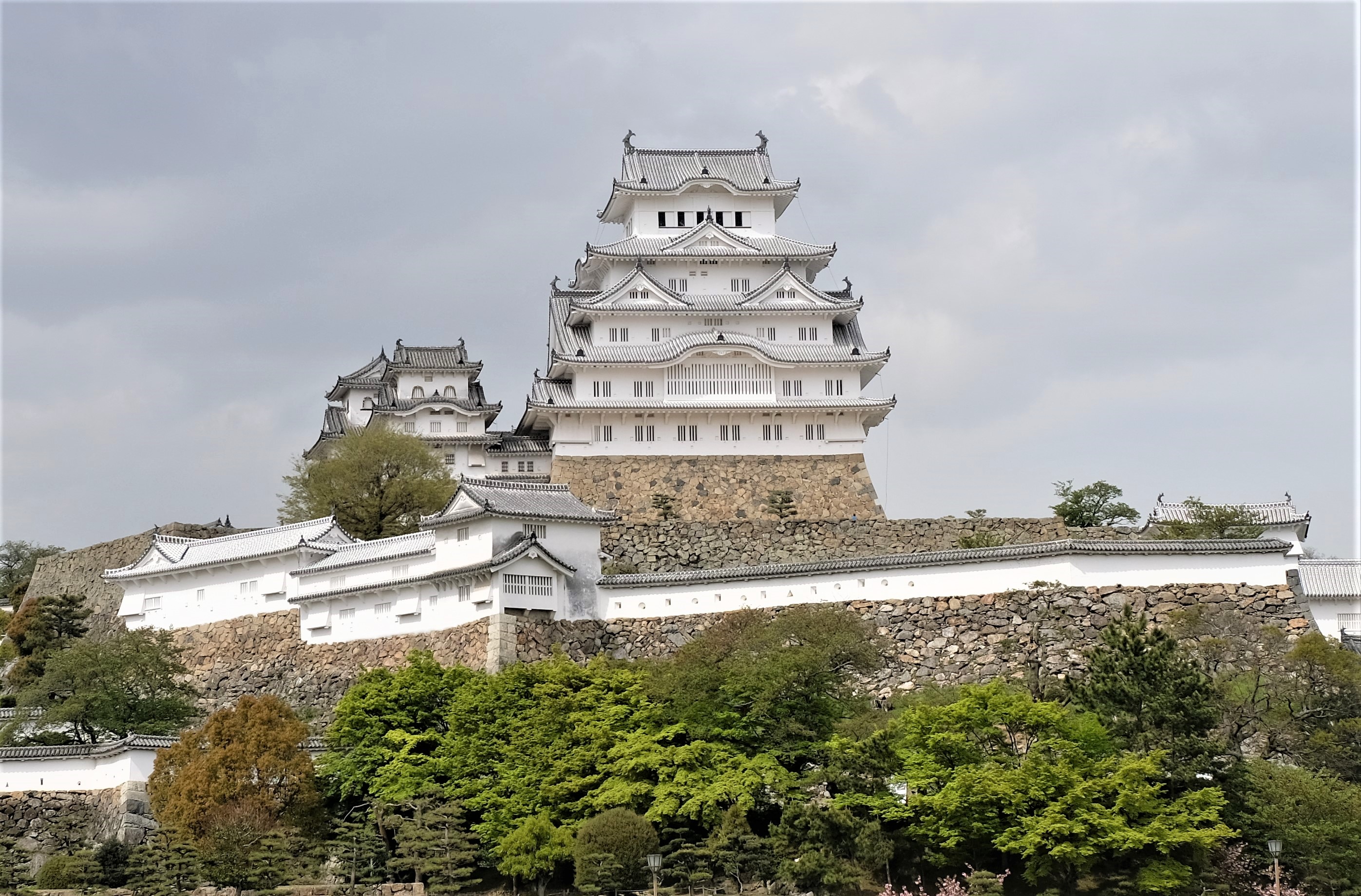
Getting to Himeji Castle
There are a few options you can use to get to Himeji; I used my JR Pass, jumped onto the Shinkasen taking just over 40 minutes (limited frequency service to Himeji). Other options are to take the normal trains, the express train (limited service), bus or buy a ticket for one of the other Shinkansen’s (not part of the JR Pass). Alternative routes are longer (bus, normal train) taking up to 90 minutes, so even these are good options; JR Pass access.
Arriving at Himeji
Himeji Castle is possibly one of the easiest places to find. Arriving at Himeji, you exit the train station which leads onto the main road running through the town. Look to the right and castle bares down at the city from its vantage point on top of Himeyama hill (which is 45m high). All that waffle is my way of saying, the castle towers over everything, watching the town like a guardian samurai warrior. No doubt the main road was built (my guess), to showcase the towns star attraction…make no mistake, it is well worth showing off! It was one of Japans first UNESCO World Heritage Sites, registered on 11th December 1993.
Even from the distance of the train station, first impressions, WOW! Looking like an elaborate five-tiered samurai helmet, each tier finished off with crested tops and flared bottoms. The whole structure perched on top of a gargantuan plinth with flat sides of stone walls. From ground level to the roof is 92m! There have been many comparisons to the castle resembling a bird taking flight, I can see why. With its spectacular positioning, colour and movement created by architecture this is a masterpiece of art and not just a building. No wonder the castle is often referred to as Hakuro-jō or Shirasagi-jō (“White Egret Castle” or “White Heron Castle”).
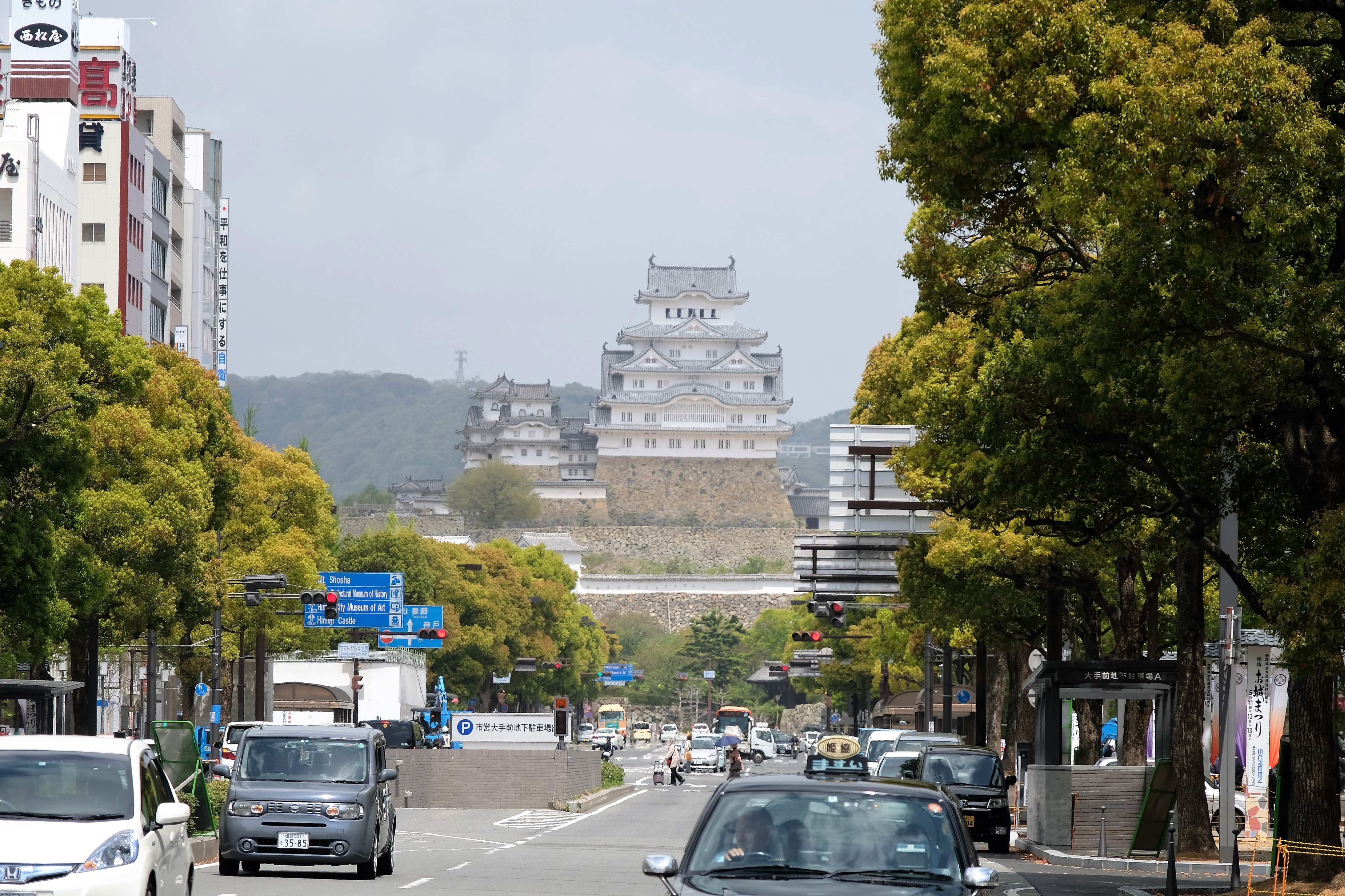
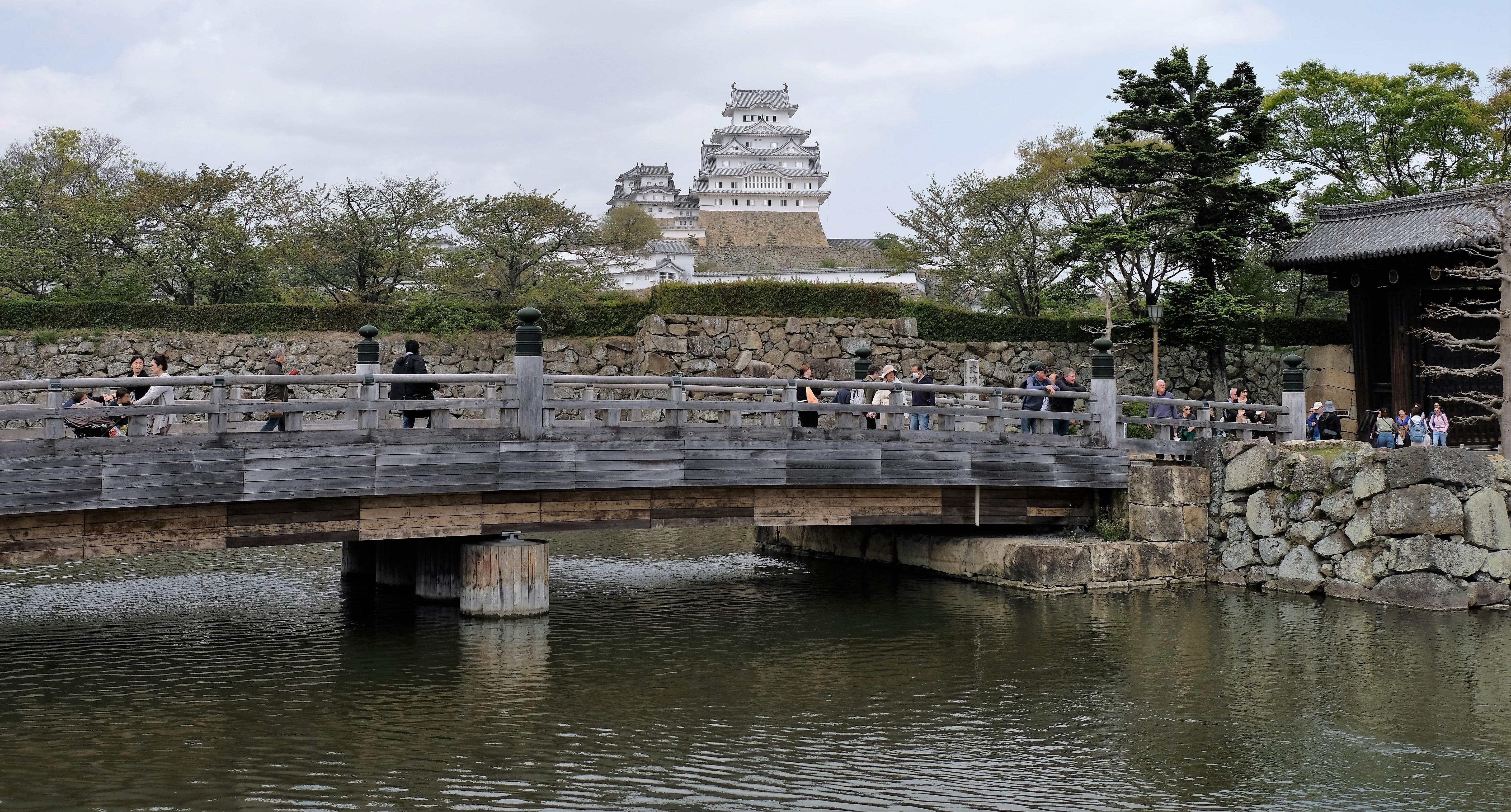
Far from being a pretty princess, Himeji Castle may look like a paper tiger or the lavish spending project of some power-hungry King or Prince. Himeji Castle isn’t the Versailles of Japan either. Oh no, Himeji may look like a delicate flower, it is in fact a purposeful stronghold and has been tested through time…many times over. It’s a sprawling complex, with a circumference of 4.2 kilometers.
Some facts and figures about Himeji Castle
Returning to the nature of the castle, it was built as a stronghold and residence of powerful clan members – I’ll get into that shortly. Little has changed from the original design, the main changes are the moats. With the outer moat now covered, the middle moat partially exists, only the inner one is still intact. These moats served two purposes; first, as a defensive mechanism (they range from about 20m-34m wide and 2.7m deep). Second, as a fire pool; considering how many ancient Japanese buildings have burnt down (many several times!) this is a prudent addition. To give you an idea of size, the inner moat covers an area of 2,500 meters square.
A windy maize takes you from Hishi Gate (main entrance) to the main keep, taking you through gate, upon gate, upon gate, 21 to be precise – there used to be 84! This maze increases the direct distance from the gate to keep from 130m to 325m. The pathway irregularly changes elevation, direction and width, which would funnel and control the pace of any invading force.
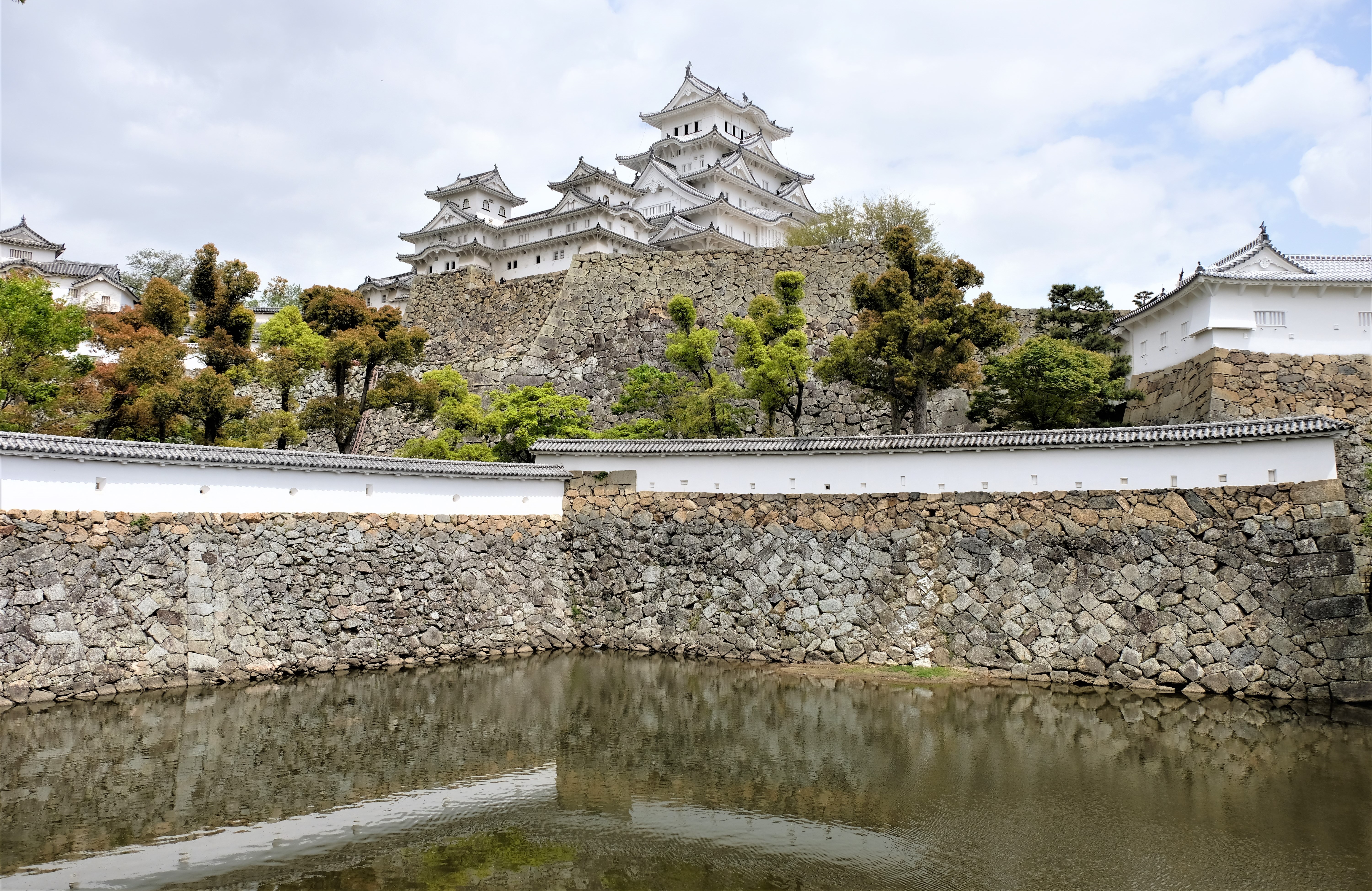
Viewed from the outside you’d be forgiven for thinking the keep has five floors (that’s what I thought) – in fact it has six and a basement. Floor two and three (from the top) are made to look like one when looking from the outside. The keep, it goes without saying, is the centre piece of this magnificent structure. It’s a huge complex with 83 buildings, 74 of which are designated as Important Cultural Assets, including 11 corridors, 16 turrets, 15 gates, and 32 earthen walls
Honda Tadamasa made some major additions to the complex, mostly purpose built for his daughter-in-law, Princess Sen. These additions included 240m of corridors as part of the Princess living quarters. These living quarters offer some of the best views of the main keep, yet still offer privacy and the best of luxury of that era.
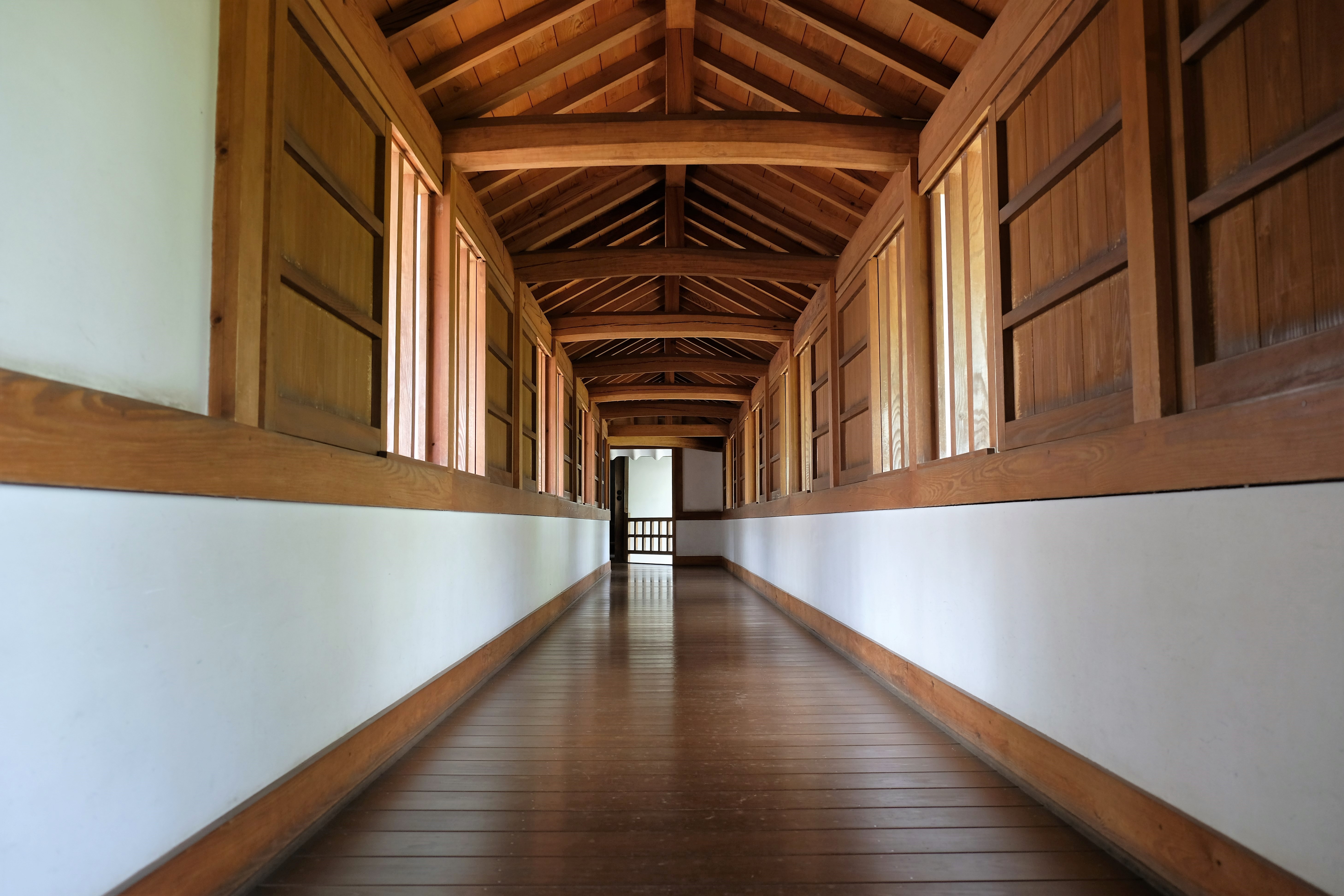
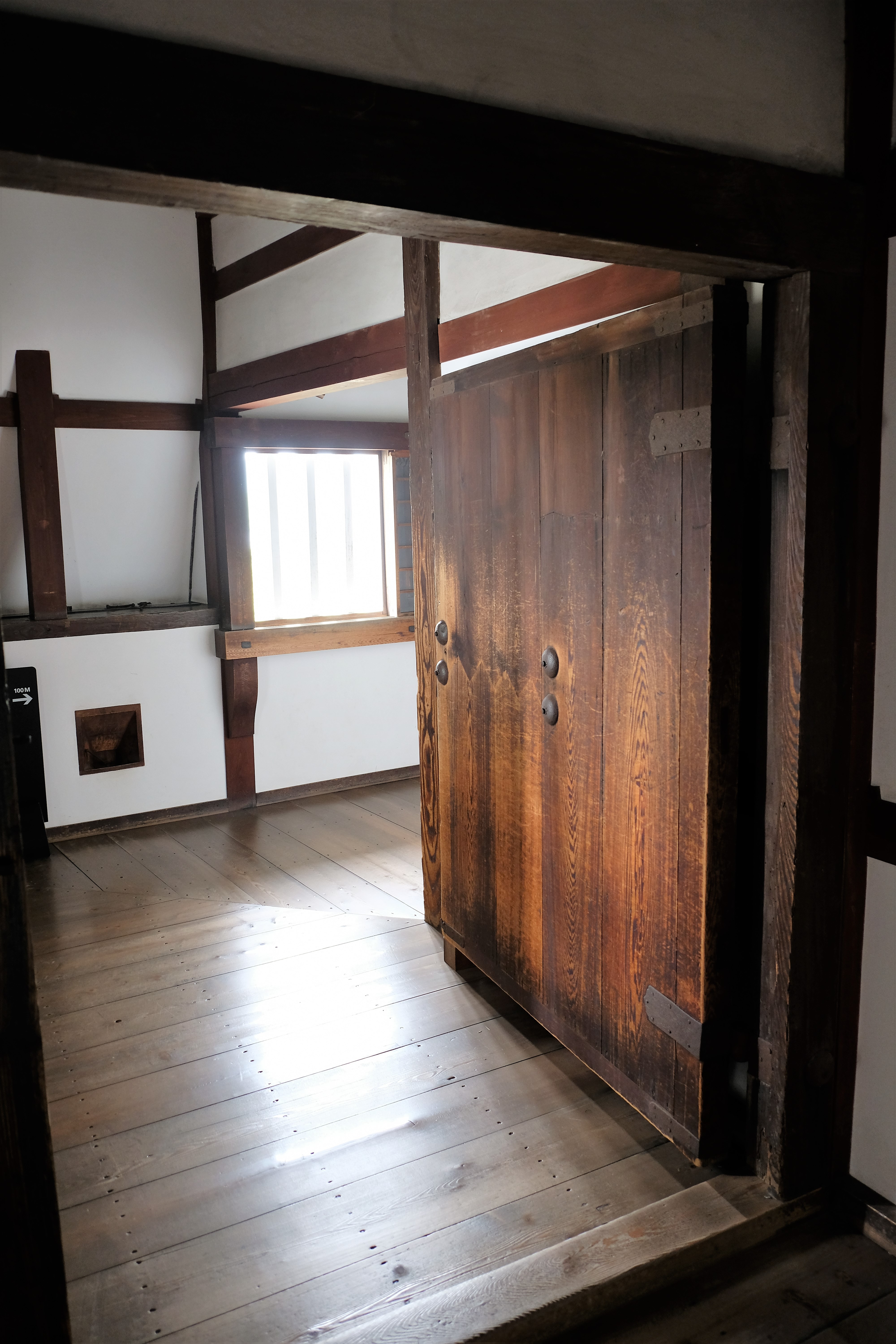

The Main Keep / Daitenshu
Constructed around two pillars which stretch from the ground floor to the roof. Two joined Japanese cypress trees make up the Easter pillar, which used be be a single fir tree – changed during restoration (1956-1964). The West pillar is the original, a single Japanese cypress. Both are great chunks of wood forming the main substructure of the keep, just like the elevator shafts of modern buildings.
The main keep is 46.4m high and surrounded by three smaller keeps called, kotenshu. The basement houses some of the functional rooms such as toilets and the kitchen. Each floor of the keep has a set purpose, all with defensive mechanisms – at its peak, the keep had 280 guns. Floor 1, often referred to as “thousand-mat room” because of its 330 tatamimats and has walls lined with weapon racks. The first floor is 554 meters square, the second 550, third is 440 with the fourth floor of 240. Floor 3 and 4 also have “stone-throwing platforms (ishiuchidana); raised platforms by the windows allowing defenders to attack wanted intruders from above. The keep includes special hiding places called (mushakakushi); used to hide and attack intruders by surprise.
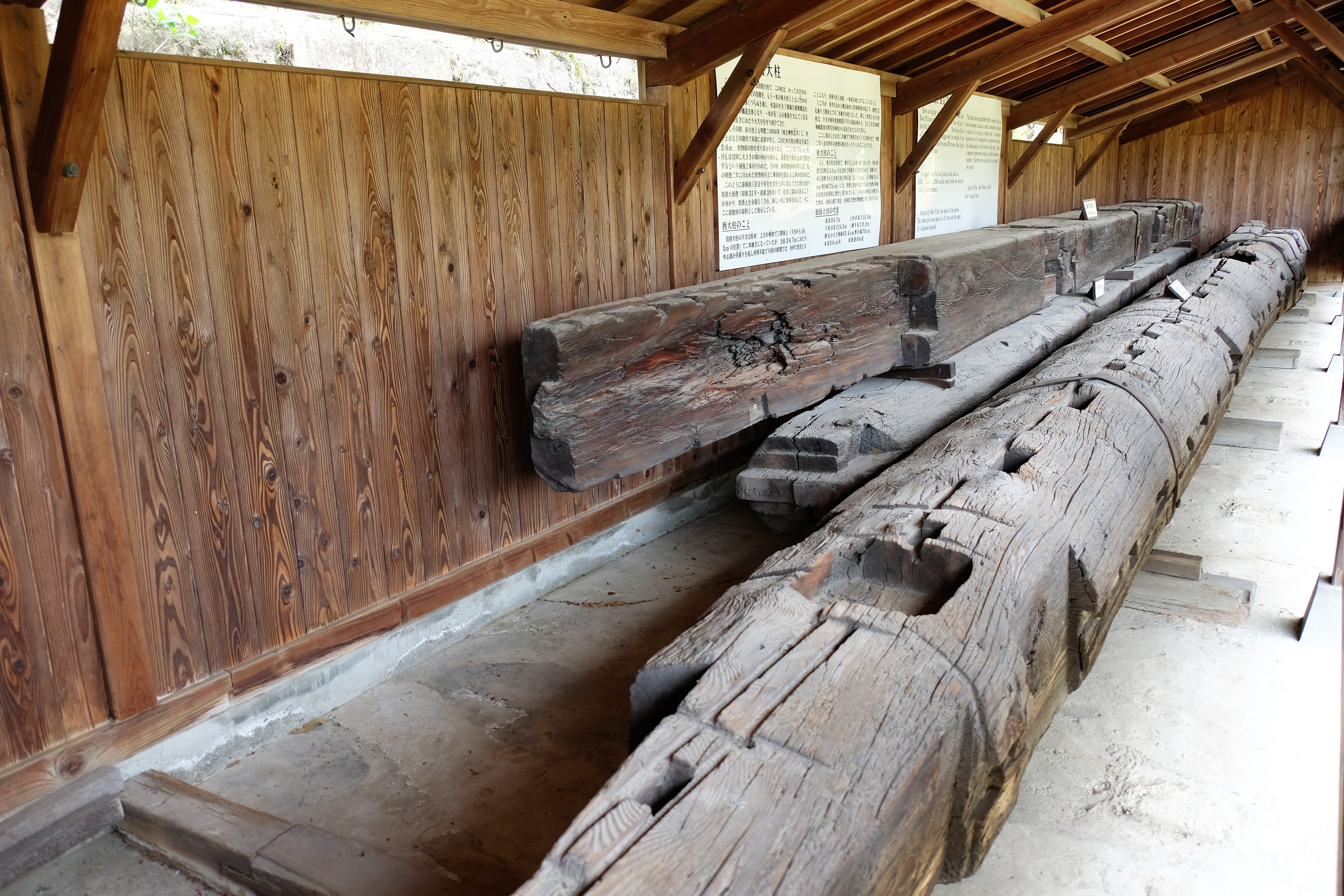
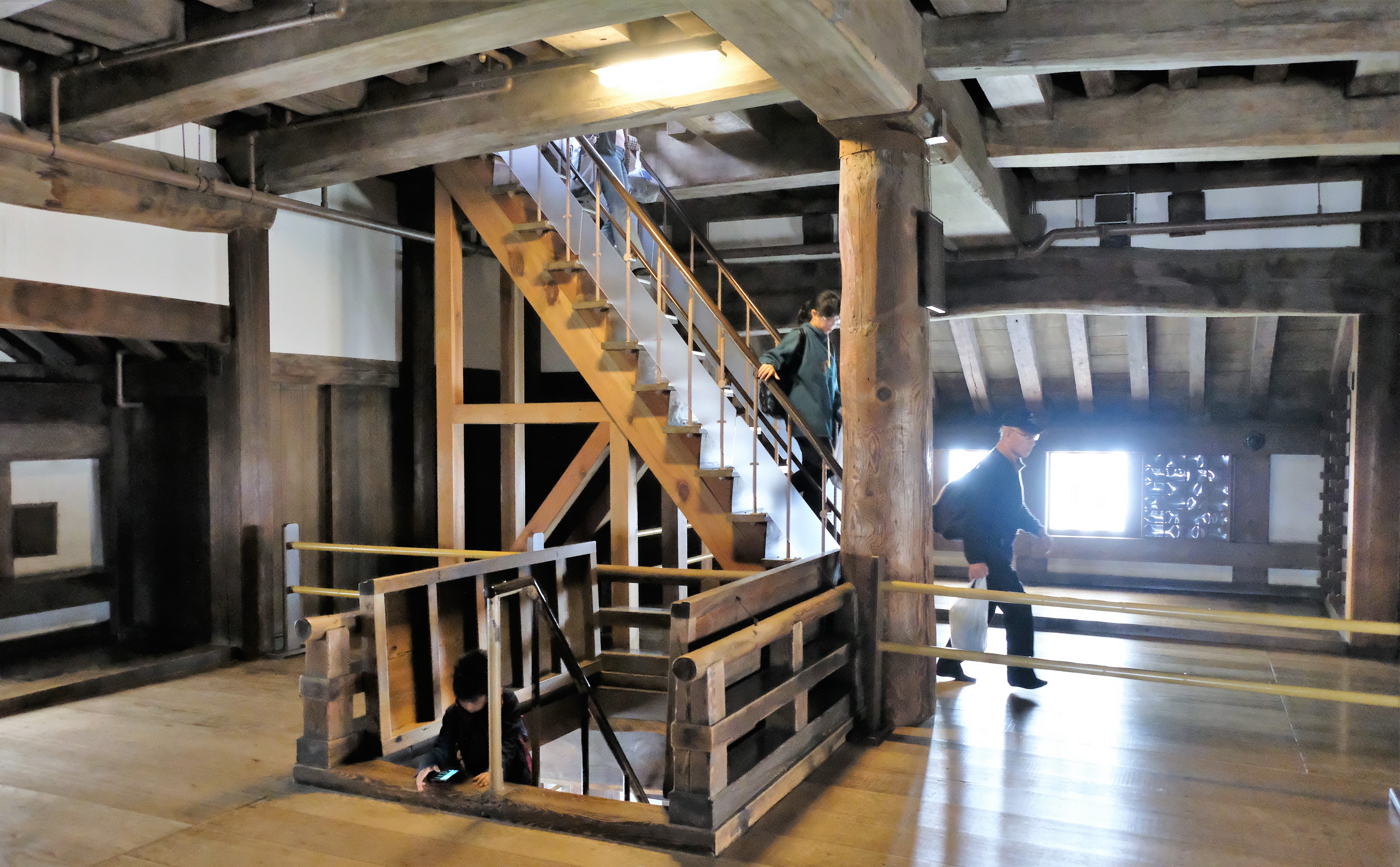
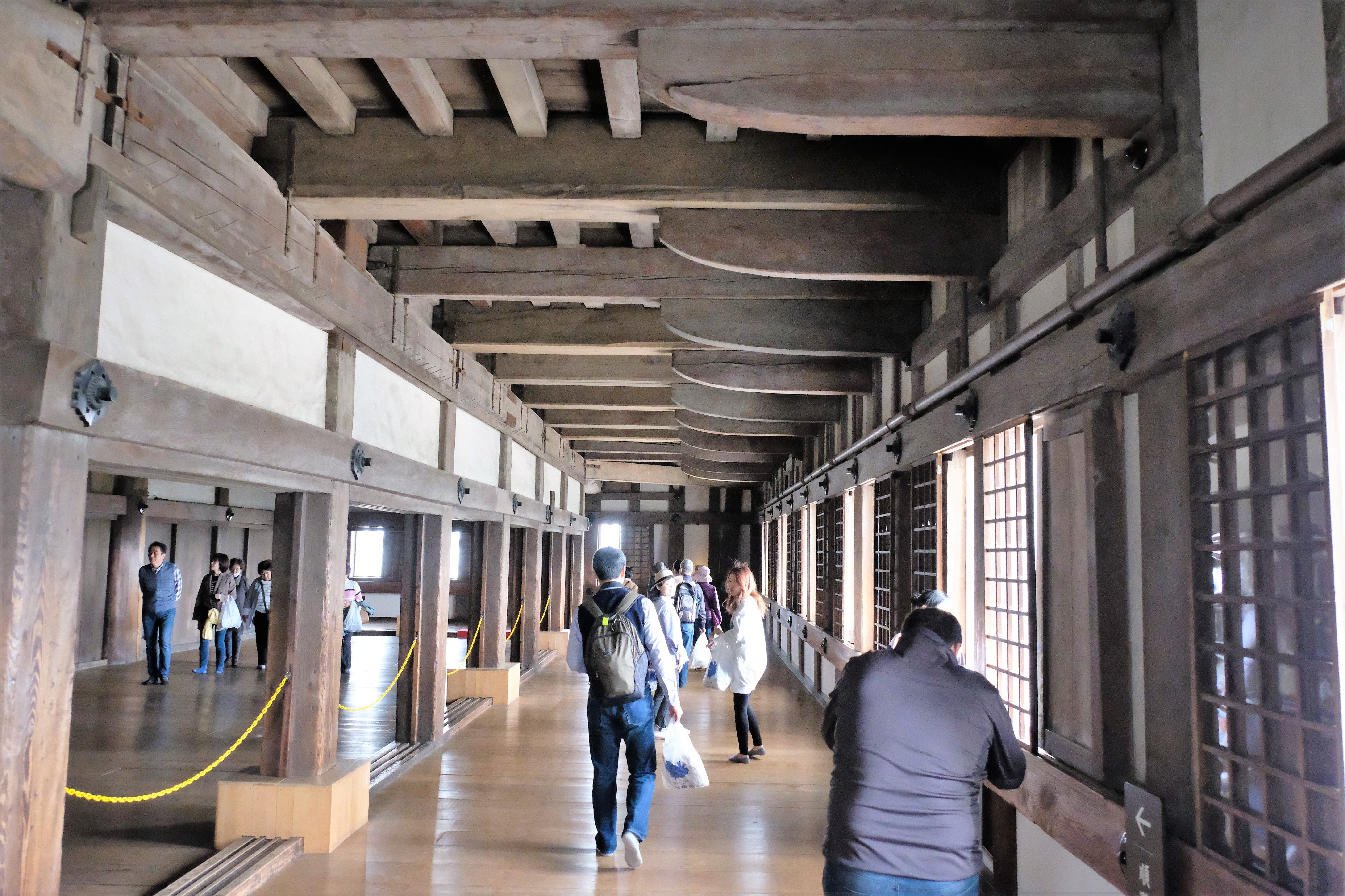
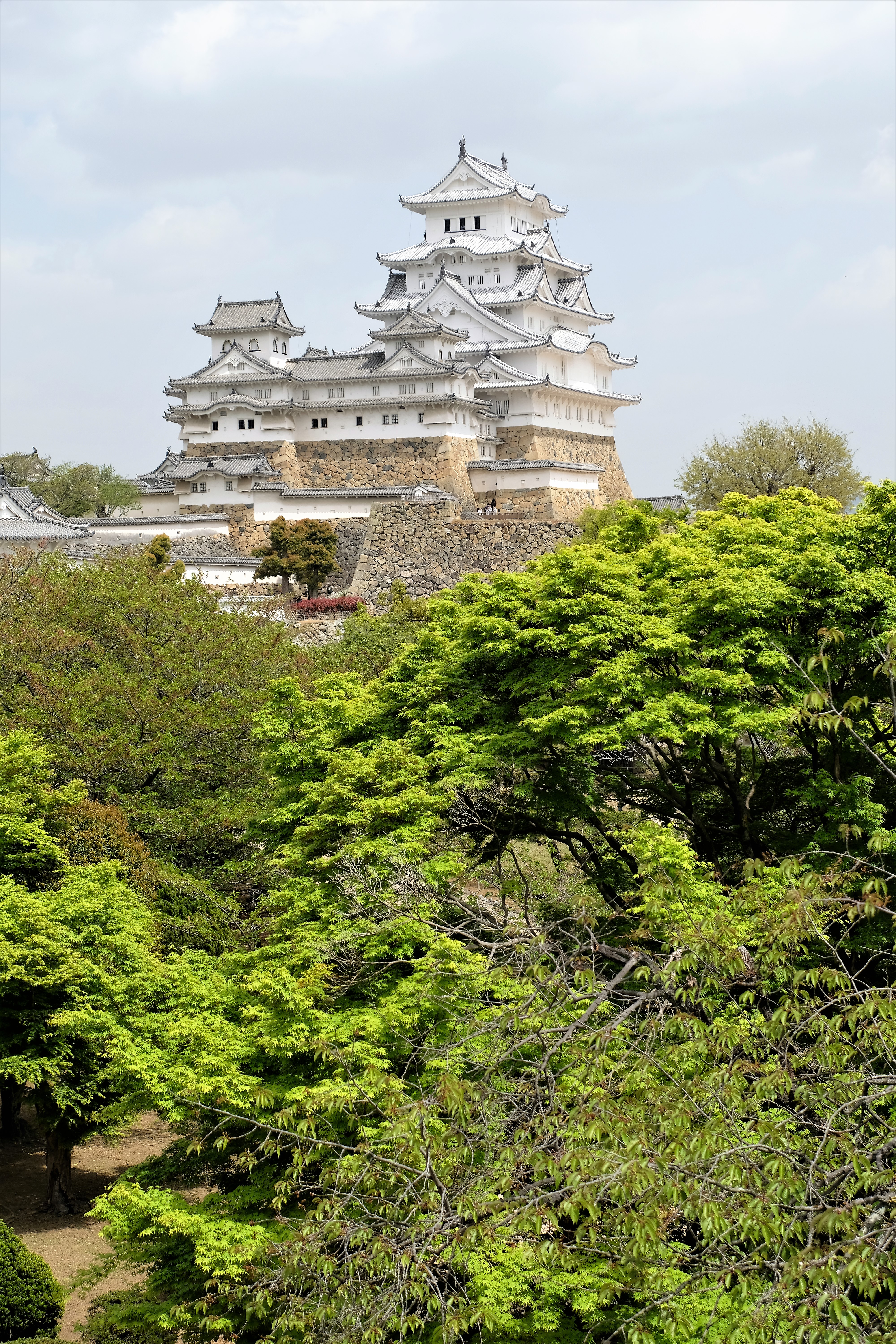
Timeline of Himeji Castle
Himeji Castle is a survivor. From wars, fires, bombs, economic downturns, demolition, rebuilding and additions. It now stands with all the history and pride it deserves. The first known construction was a fort built in 1333 at the behest of Akamatsu Norimura. Himeyama as the town was then known, was chosen due to its strategic position against a backdrop of conflict within the region between feuding clans.
Here is the shortened timeline of Himeji Castle (I haven’t even included everything!):
- In 1333 a fort was constructed on Himeyama hill by the ruler of the ancient Harima Province, Akamatsu Norimura. This was the first of many construction projects on the hill spanning over six centuries
- His son Sadanori demolished this fort and built Himeyama Castle in its place in 1346
- The Kuroda clan was ordered by Kodera clan to be stationed here in 1545. Feudal ruler Kuroda Shigetaka remodelled the castle into Himeji Castle,
- Work on the construction of Himeji Castle was completed in 1561
- In 1580, Kuroda Yoshitaka presented the castle to Toyotomi Hideyoshi
- Hideyoshi significantly remodelled the castle in 1581; building a three-story keepwith an area of about 55 m2
- After the Battle of Sekigaharain 1600, Tokugawa Ieyasu granted Himeji Castle to his son-in-law, Ikeda Terumasa, as a reward for his help in battle
- Ikeda demolished the three-story keep that had been created by Hideyoshi. He completely rebuilt and expanded the castle from 1601 to 1609; adding three moats and transforming it into the castle complex as we know it today
- Ikeda died in 1613, passing the castle to his son, who also died three years later
- Himeji Castle was inherited by Honda Tadamasaand his family in 1617.
- Honda added to the castle, most notably a special tower for his daughter-in-law Princess Sen (more about Princess Sen later)
- The Meiji Period (1868 – 1912) saw many Japanese castles destroyed. Himeji Castle was left to deteriorate and was abandoned in 1871.
- The new occupant was the army; they destroyed some of the corridors and castle gates to make way for army barracks.
- Himeji Castle was put up for auction after the han feudal system was abolishedin 1871. A resident of Himeji bought it ¥23! In today’s money that’s about US$2 260.00!!!
- The new owner was going to demolish the castle to plant fields, however, he couldn’t afford the demolition costs
- After the feudal system the Government demolished many castles throughout Japan, Himeji was on that list. Thankfully it was saved from destruction due to the efforts of an army colonel, Nakamura Shigeto
- During World War II, the city of Himeji was destroyed twice, yet the castle was left unscathed. A firebomb hit the castle in 1945, it failed to explode, leaving the castle as the only standing building in Himeji town!
…yes I know, that’s a very long short timeline!
This grand castle has seen change and destruction across its lifetime that one could only imagine. Including the devastating earthquake (Great Hanshin earthquake) that hit Himeji in 1995, destroying large parts of the city, the castle was unscathed. Through hundreds of years of Japanese architectural evolution their ancient building methods have adapted, making their buildings earthquake proof. Most of their ancient buildings have no nails, using their master carpentry skills and the natural properties of wood to move and flex.
Needless to say, I’ve become a huge fan of Japanese craftmanship in almost every category I have seen. I’m guessing during the castle’s prime the interior would have been decorated and filled with only the best that money and power could bye. Now, only the beauty of the structure is on display. It needs no frills and decorations for the splendour of this magnificent structure to be admired. I spent a few hours ambling along through its corridors and halls, trying my best to take in and observe every detail – failing dismally ?! This is one of those places you could visit a thousand times and see something new every time. I can only imagine how the setting changes through the seasons! Obviously, the gardens within the grounds are beautiful, but the castle steals the show.
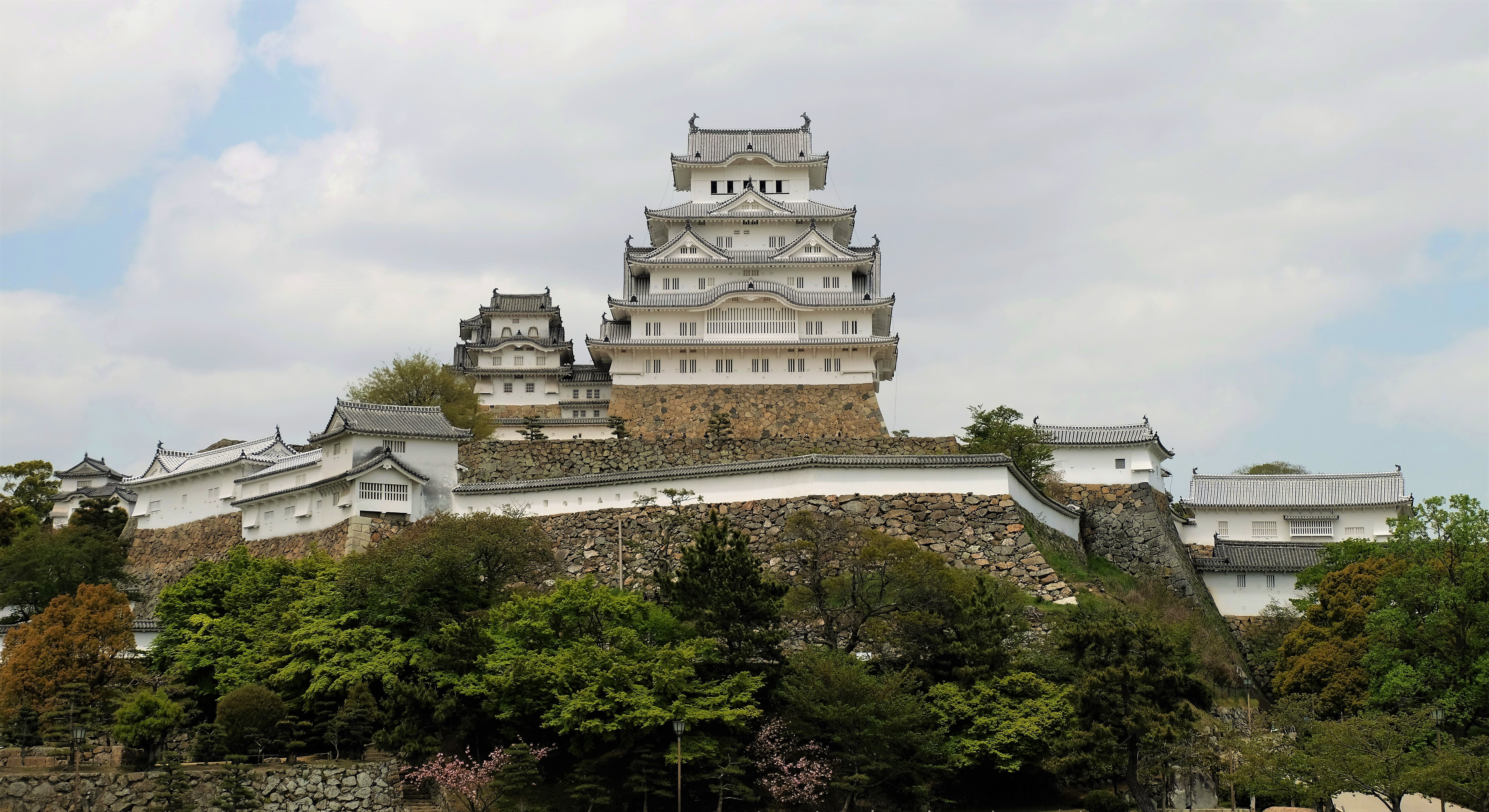


The Princess Story
Princess Senhime or Lady Sen has become a bit of a legend. As with legend stories it is not always know what is true, fiction or and embellishment of the truth – I’d call it a tragic love story. Her first marriage was to Toyotomi Hideyori, the successor to the Toyotomi clan. Together they had a son and lived in Osaka Castle until it was besieged by Lady Sen’s grandfather. With the fall of Osaka Castle it was custom for the “looser” to commit seppuku/harakiri along with his mother and seven year old child Toyotomi Kunimatsu. Princess Senhime was able to escape along with her stepdaughter.
Folklore says Lady Sen was saved from Osaka Castle by Sakazaki Naomori, who was of a social lower rank. When he heard that Lady Sen would be remarried to Honda Tadatoki, he planned to capture her and marry her instead. Sakazaki’s plan was foiled and he was forced to perform seppuku. It seems her marriage to Honda was cordial, they had a son and daughter. Unfortunately her son died at the tender age of three, Honda died five years later. As per custom of the time, Princess Senhime cut her hair short, changed her name to Tenjuin, living out the rest of her life as a Buddhist nun.

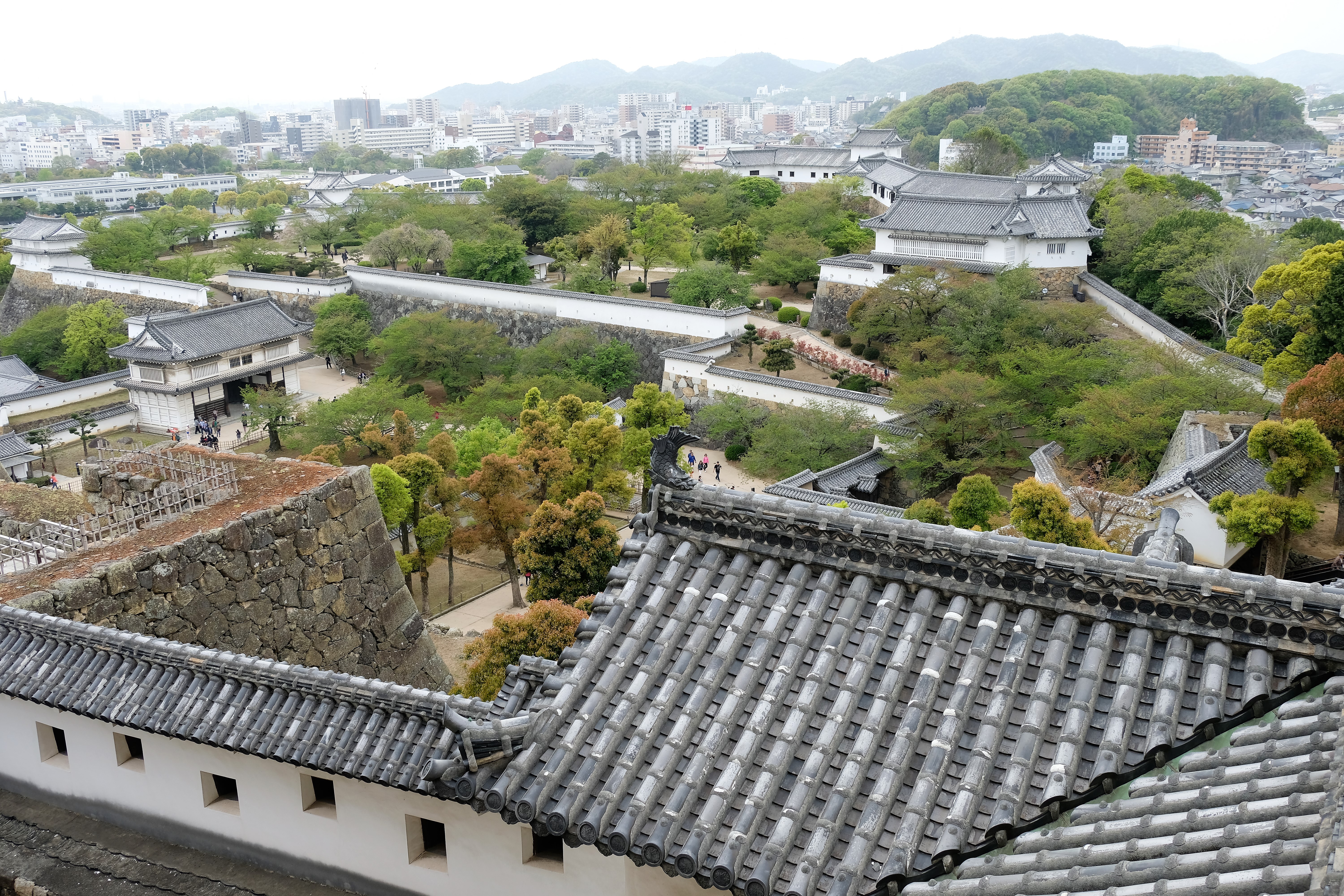
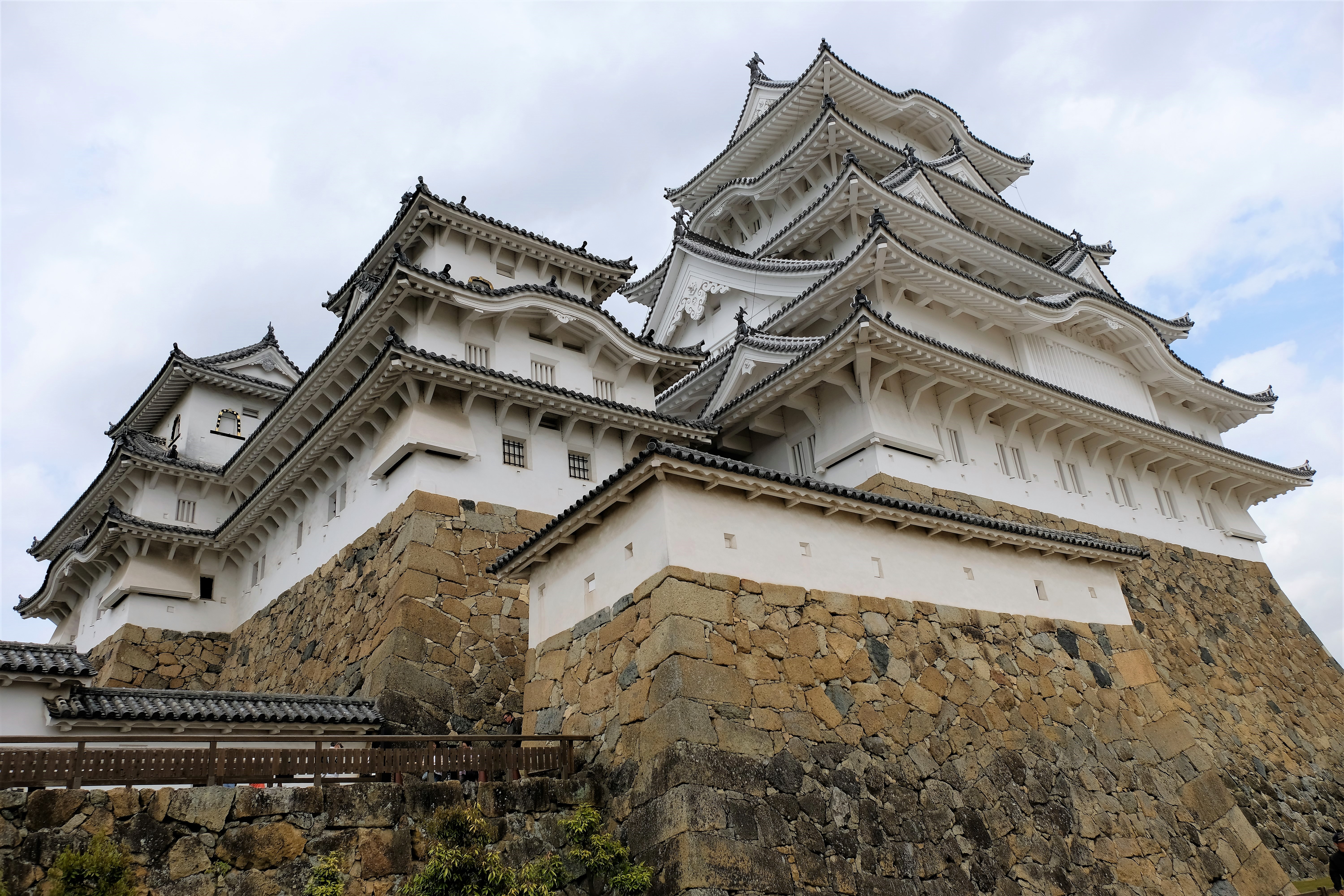
If you are ever in the neighbourhood, I can highly recommend visiting Himeji Castle. In fact, even if you are not in the neighbourhood, I’d suggest a long detour to visit it! Next post will be on Hiroshima, a poignant visit and relevant in today’s times of conflict throughout the world. At least this post on Himeji Castle has lots of photos, I hope you like them.
…..Just a few more photos! 🙂
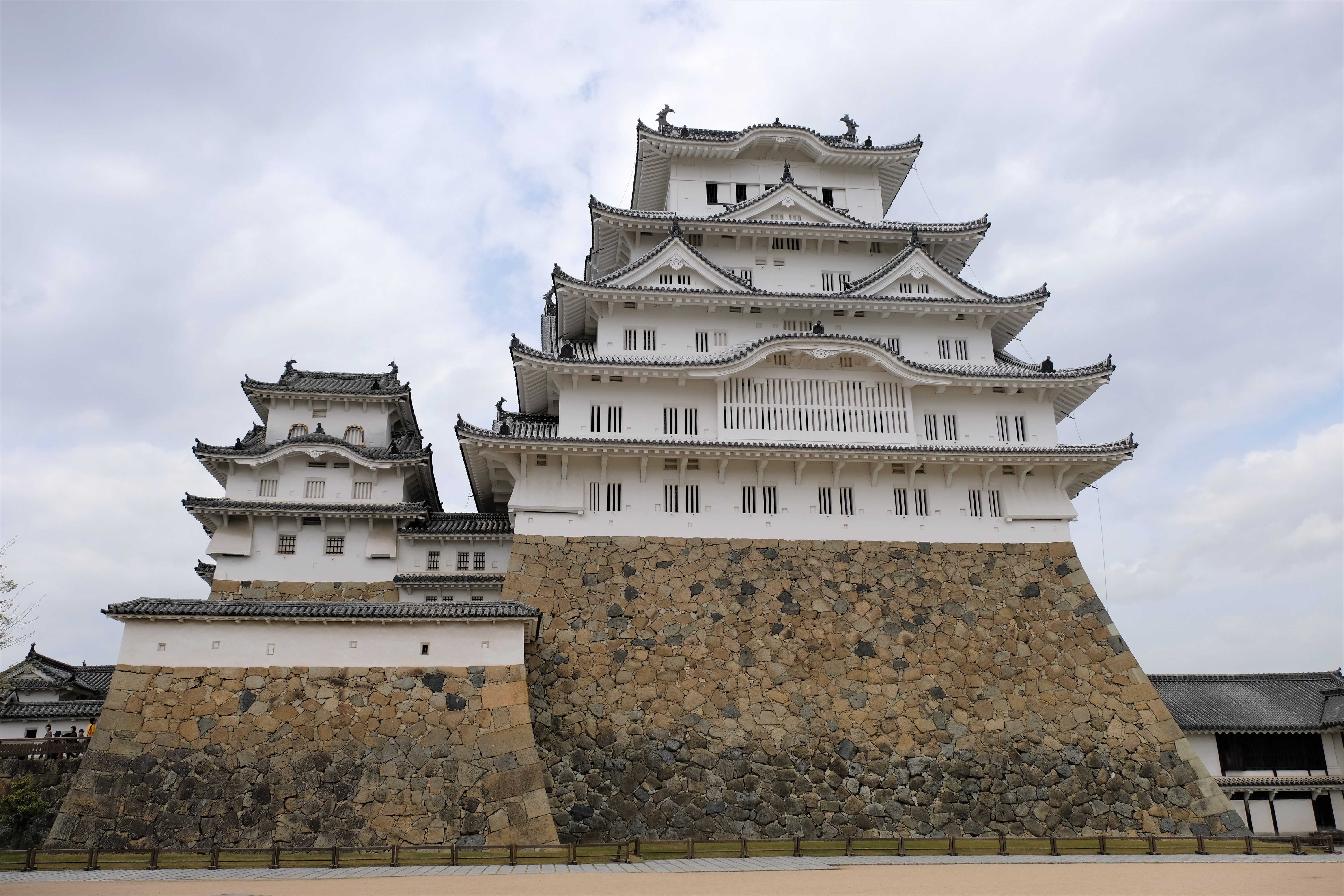
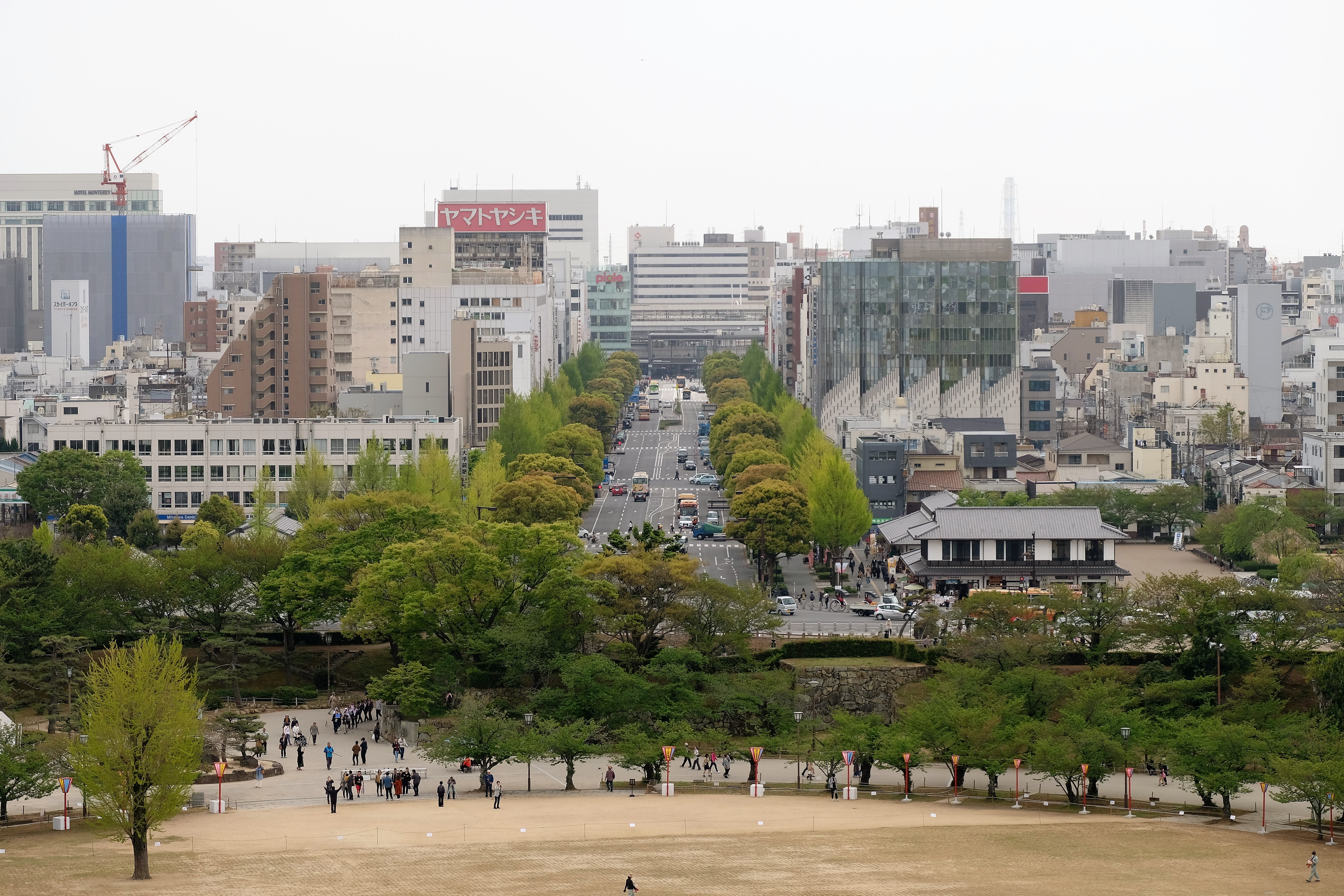
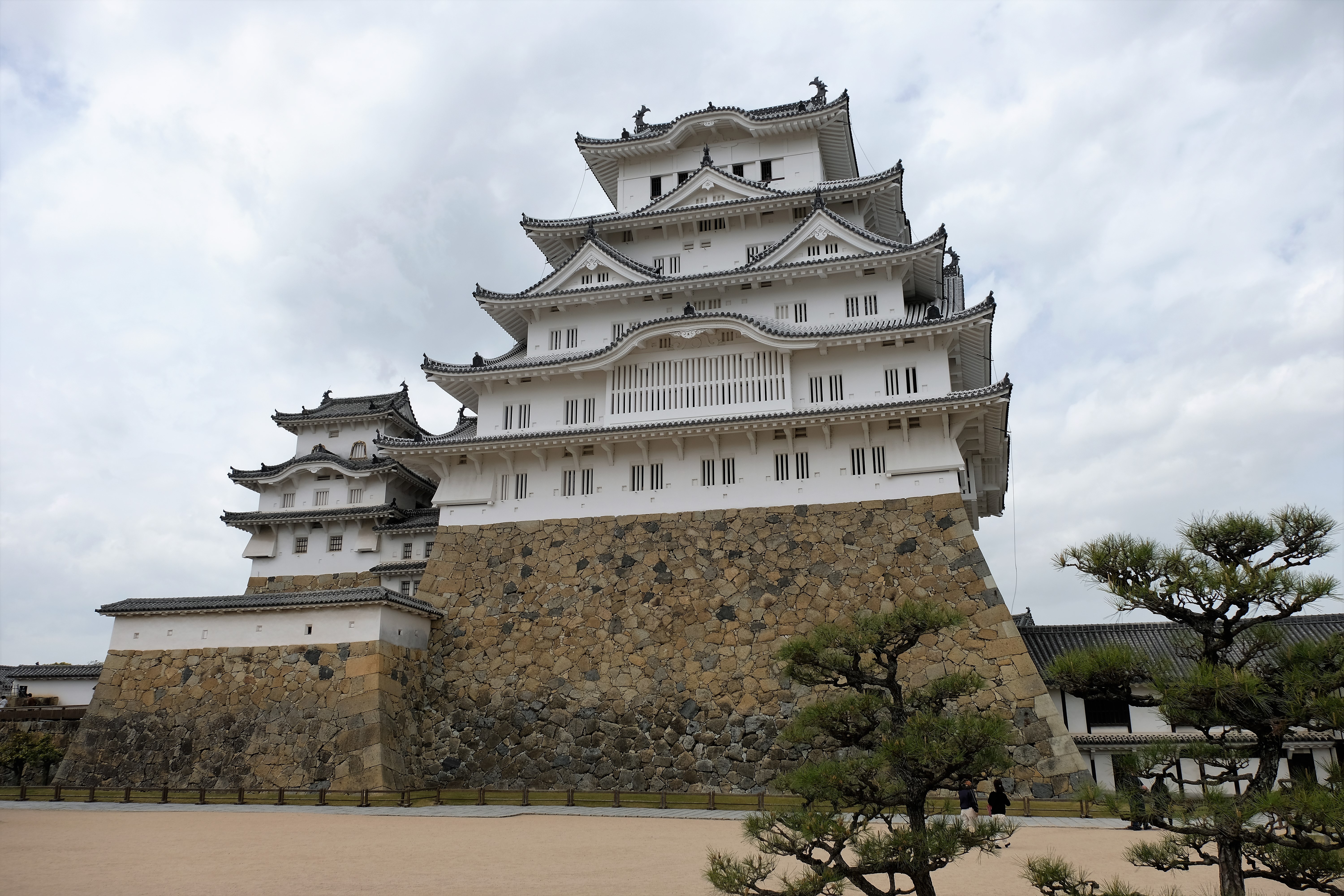
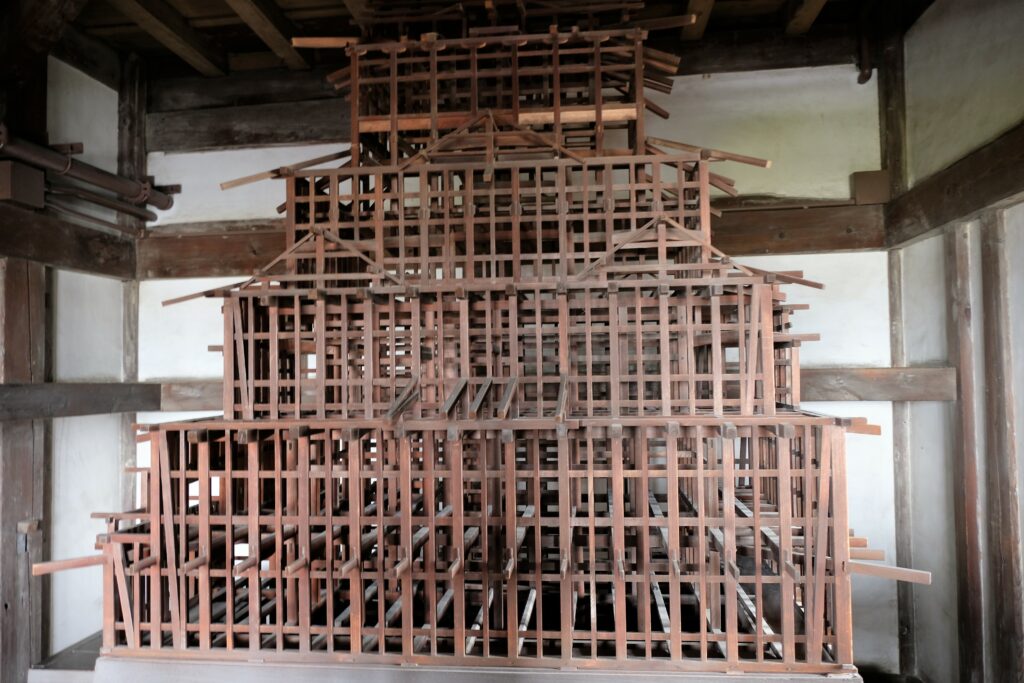

You really seem to have fallen in love with that castle! Loved the writing.